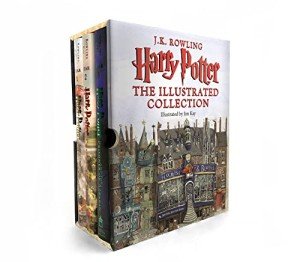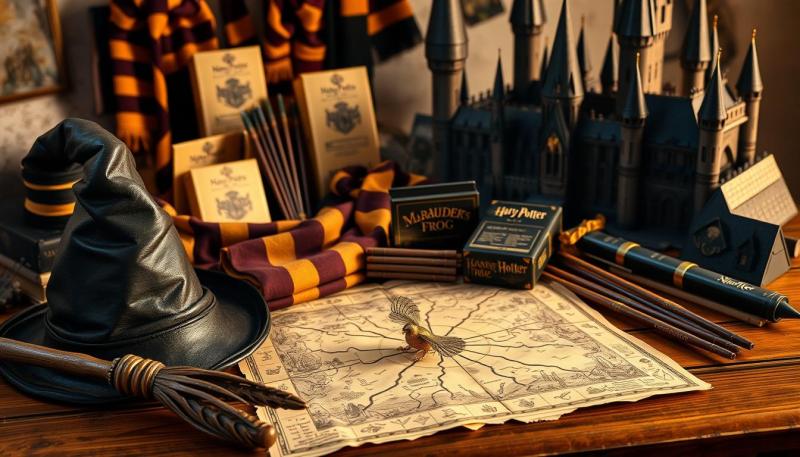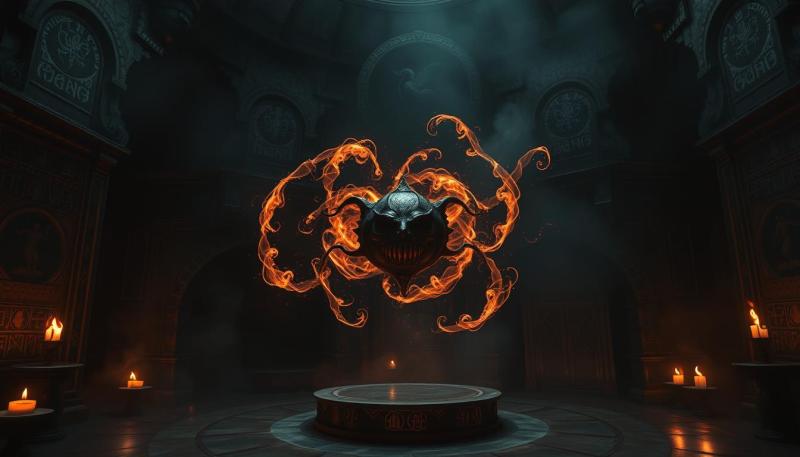I’ll never forget the first time I realized even fictional friendships can break your heart. Picture this: a cozy reading nook, a mug of tea, and that gut-punch moment when you discover a beloved character’s shocking betrayal. Sound familiar? That’s exactly how millions felt when J.K. Rowling revealed the truth about Peter Pettigrew.
This unassuming wizard – known as Wormtail or Scabbers – might seem like background noise at first glance. But his journey from loyal friend to traitor shapes the entire Wizarding World saga. Born between 1959-1960, Pettigrew’s ability to transform into a rat wasn’t just clever wordplay. It became a haunting metaphor for how fear can make people scurry toward darkness.
What fascinates me most isn’t just his actions, but why he chose them. Through Pettigrew, Rowling shows us how cowardice disguised as survival can unravel lives. His death at Malfoy Manor in 1998 wasn’t just an ending – it was the final note in a symphony of poor choices.
Key Takeaways
- Peter Pettigrew’s betrayal redefined friendship dynamics in modern fantasy
- His Animagus form symbolically mirrors his moral compromises
- The character drives major plot twists across multiple books
- Rowling uses his arc to explore the cost of easy choices
- Pettigrew’s legacy serves as a timeless warning about loyalty
Introduction to Peter Pettigrew
In a world of magic, sometimes the quietest figures cast the longest shadows. Meet Peter Pettigrew – the unassuming wizard whose five-minute Sorting Hat deliberation foreshadowed a lifetime of contradictions. That extended pause (called a Hatstall in wizarding terms) wasn’t just ceremony – it was our first clue that this Gryffindor student contained multitudes.
You might know him as Scabbers, the Weasley family’s pet rat, or Wormtail, the nickname echoing his Animagus form. But here’s what fascinates me: his 1971 Hogwarts admission marked the beginning of a double life that would rock the wizarding world. The Sorting Hat’s hesitation between houses mirrors our own struggle to categorize him – hero or villain? Victim or architect of chaos?
Consider these revealing details:
- The longest recorded Hatstall of his class year
- A Gryffindor placement despite lacking traditional bravery
- Friendships with future legends like James Potter and Sirius Black
What makes Pettigrew compelling isn’t his power, but his relatability. He’s the wizard next door – average in talent, shaky in conviction, yet pivotal in shaping history. Through him, J.K. Rowling asks a haunting question we’ve all faced: "What would you sacrifice to feel safe?"
His journey from anxious student to instrument of destruction reminds us that monumental choices often begin in ordinary moments. That rat in the corner? It might just hold the key to unraveling your favorite hero’s story.
Overview of Peter Pettigrew's Life
Some stories begin with a whisper rather than a bang. Peter Pettigrew’s early life unfolded in a modest magical household, far from the grandeur of pure-blood estates. Born around 1959 to a witch mother and a father whose magical status remains unknown, his childhood blended ordinary wizarding traditions with quiet insecurity.
Early Life and Origins
Growing up in the magical world meant Peter never experienced Harry’s wonder at discovering spells or creatures. Yet this familiarity bred neither confidence nor ambition. His family background – half-known, half-mysterious – created a boy perpetually caught between worlds. I’ve often wondered: did that unknown paternal lineage fuel his lifelong craving for belonging?
Transition to the Wizarding World
When the Hogwarts Express carried 11-year-old Peter to Hogwarts School of Witchcraft in 1971, he stepped into a storm. Imagine clutching your first wand while surrounded by future legends – James Potter’s charisma, Sirius Black’s daring. For a boy already doubting his worth, these years became both salvation and trap.
What fascinates me isn’t just who Peter became, but when the cracks appeared. His story whispers a truth we often ignore: childhood shadows stretch further than we think.
Understanding the harry potter rat guy
Have you ever noticed how the best disguises hide in plain sight? That's exactly what makes Peter Pettigrew's secret so brilliant. His ability to shift into a rodent wasn't just party magic - it became the ultimate survival tool in J.K. Rowling's wizarding universe.
| Aspect | Literal Meaning | Symbolic Meaning |
|---|---|---|
| Appearance | Small brown rat | Diminished humanity |
| Duration | 12 years as Scabbers | Permanent moral compromise |
| Behavior | Hiding in shadows | Fear-driven choices |
What fascinates me most isn't the magic itself, but what it reveals. That little rodent scurrying through the Weasley household? It's walking proof that how we survive matters as much as that we survive.
Rowling didn't just create a plot twist - she crafted a living metaphor. The rat's need for dark corners mirrors Pettigrew's constant retreat from moral courage. His silver hand later becomes the perfect irony: a shiny tool that can't grasp redemption.
Here's what many miss: becoming an unregistered Animagus required extraordinary skill. This "weak" wizard secretly mastered complex magic, proving true power lies in unexpected places. Sometimes the quietest magic makes the loudest impact.
Early Years and Hogwarts Experiences
What does it take to rewrite your destiny in ink? For Peter Pettigrew, it began with a trembling hand beneath the Sorting Hat. The magical artifact’s five-minute debate over his house placement wasn’t just dramatic flair—it was a neon sign pointing to his divided nature. Gryffindor’s bravery or Slytherin’s cunning? Even the Hat sensed this student would spend years straddling moral lines.

Sorting Hat Dilemma and Hatstall
That extended Hatstall—one of the longest in Hogwarts history—reveals everything. Choosing Gryffindor shocked those who’d later call him friend. But here’s what most miss: the Hat didn’t make a mistake. It saw potential for courage Peter would repeatedly abandon. His eventual betrayal? Written in those 300 seconds of hesitation.
Friendships with the Marauders
You can almost picture it: a scrawny first-year trailing behind James Potter and Sirius Black like a shadow seeking light. Their bond began with shared mischief but grew into something unbalanced. Peter idolized their confidence, mistaking loyalty for servitude.
Three truths about these friends:
- James and Sirius saw a companion, not a sidekick
- Peter’s admiration hid simmering resentment
- Their Hogwarts years created a dependency that poisoned later choices
The tragedy? These boys became brothers at the School of Witchcraft and Wizardry, unaware their fourth member carried betrayal in his pocket like a stolen Chocolate Frog card.
The Marauders and the Animagus Transformation
What does true friendship look like in the face of danger? For four Hogwarts students, it meant risking expulsion – and their lives – to master one of magic’s most complex arts. The bond between James Potter, Sirius Black, Remus Lupin, and Peter Pettigrew redefined loyalty through their extraordinary Animagus transformation.
Formation of the Marauders
When the group discovered Remus’s werewolf condition, they didn’t flinch. Instead, they spent three years secretly learning to shapeshift. I’ve always marveled at their dedication – teenagers voluntarily enduring grueling transformations just to ease their friend’s monthly torment.
| Marauder | Animagus Form | Strategic Purpose |
|---|---|---|
| James Potter | Stag | Dominant protector |
| Sirius Black | Dog | Combat companion |
| Peter Pettigrew | Rat | Stealth operations |
Adopting the Rat Form
Peter’s rat form became the group’s secret weapon. His small size let him disable the Whomping Willow’s lethal branches, creating safe passage to the Shrieking Shack. It’s tragic how this symbol of camaraderie later enabled his betrayals.
The ultimate irony? The same form that made him indispensable to his friends eventually became his hiding place. Rowling shows us how skills forged in loyalty can twist into tools of cowardice when character falters.
Betrayal of the Potters
Trust can be the most dangerous magic of all. When James and Lily Potter went into hiding, their survival depended on a single spell – the Fidelius Charm. Little did they know their faith in a friend would become the wizarding world’s most devastating turning point.

Role as the Secret-Keeper
Here’s what still keeps me up at night: Sirius Black convinced the couple to use Peter as their human vault. The plan seemed brilliant – who’d suspect the timid Marauder? But as this analysis reveals, the betrayal began long before that Halloween night.
"I thought we were brothers," Black later confessed. "But fear makes strangers of us all."
| Aspect | Intended Role | Actual Role |
|---|---|---|
| Loyalty | Unshakable ally | Double agent |
| Strategy | Misdirection tactic | Direct pipeline to the Dark Lord |
| Outcome | Family protection | Massive collateral damage |
Consequences of Deception
The fallout was catastrophic. James and Lily Potter died shielding their son, while Sirius Black endured 12 years in Azkaban for crimes he didn’t commit. Peter’s silver hand later became poetic justice – a cold replacement for the warmth of true friendship.
What chills me most isn’t the act itself, but its calculated nature. This wasn’t panic – it was a months-long chess game where Peter sacrificed queens to save a pawn. His legacy? A haunting reminder that trust given blindly becomes a weapon.
Life as Scabbers in the Weasley Household
The longest con in wizarding history wasn’t pulled off by a mastermind. For twelve years, a traitor sipped pumpkin juice from a child’s teacup while the Weasley family unknowingly sheltered their worst nightmare. His silver fur hid darker secrets than any Unforgivable Curse.
Imagine this: Percy Weasley’s first Hogwarts letter arrives, and the rat in his pocket twitches with recognition. Scabbers witnessed six children grow up, their laughter echoing through a home that offered more genuine warmth than Peter ever knew as a man. The Weasley family’s kindness became his perfect camouflage – who’d suspect a beloved pet of mass murder?
| Aspect | Ordinary Rat | Scabbers |
|---|---|---|
| Lifespan | 2-3 years | 12 years |
| Behavior | Skittish, wild | Affectionate, calculating |
| Owner Awareness | Basic care | Full emotional investment |
What chills me most? Arthur Weasley’s offhand comment in Chamber of Secrets: “Old rat – been in the family for ages.” The clues were there – a rodent outliving three generations of owls. Yet love blinded them to the truth.
Peter’s hiding wasn’t just physical. He buried his humanity deeper than any burrow, trading self-respect for secondhand crumbs. Those twelve years prove a haunting truth: sometimes the safest prison is one we build ourselves.
Physical Appearance and Notable Transformations
Our bodies keep score in ways magic can’t erase. For one man, every scar and missing finger became a roadmap of poor choices. What fascinates me isn’t just how he looked, but how his form evolved to mirror his crumbling morality.
Human Form Details
Picture a man perpetually hunched – grubby skin clinging to bones like old parchment. His watery eyes darted like prey, while a pointed nose sniffed for exits. Over years, his mousy brown hair thinned into patchy wisps, revealing a scalp shiny with sweat.
The missing digits tell their own story. First, a severed index finger in 1981 – a bloody prop to fake death. Fourteen years later, his entire right hand vanished into dark magic’s maw. Each loss left him less human, more hollowed-out shell.
Harry Potter: Illustrated Chamber of Secrets Edition
Step into the magical world of Hogwarts with stunning illustrations that bring the charm of the Chamber of Secrets to life
Product information
SGD 51.93 SGD 31.27
Product Review Score
4.76 out of 5 stars
219 reviewsProduct links
Rat Form Attributes
His animal form completed the metaphor. An ordinary grey rodent, easily overlooked – perfect camouflage for a man allergic to accountability. Those twitching whiskers and matted fur? Not just disguise, but truth written in biology.
Here’s what chills me: magic preserved his body but eroded his soul. The finger-less hand that once clutched wands became a silver claw – cold metal replacing warm flesh. Some transformations can’t be reversed.
FAQ
How did Peter Pettigrew become an Animagus?
He learned to transform into a rat during his Hogwarts years with help from James Potter, Sirius Black, and Remus Lupin. The group (later called the Marauders) mastered this skill to support Lupin during his werewolf transformations.
Why did Pettigrew betray James and Lily Potter?
Fear of Voldemort’s power drove him to reveal their location as Secret-Keeper. His deception led directly to their deaths and allowed the Dark Lord to target their son, Harry.
How did Pettigrew avoid detection for over a decade?
He hid in his rat form, posing as the Weasley family’s pet Scabbers. Staying in this shape for years helped him evade both Aurors and former allies like Sirius Black.
What motivated Pettigrew to join Voldemort?
A mix of cowardice and craving for protection. He believed aligning with the Dark Lord during the First Wizarding War would secure his survival, even at the cost of his friends’ lives.
Why did Pettigrew cut off his finger?
He staged his own death in 1981 by blasting a street with magic, leaving the finger behind to frame Sirius Black. This act let him disappear and secretly rejoin Voldemort’s forces.
What physical traits identified Pettigrew’s rat form?
As Scabbers, he had a missing toe on one paw and a patchy, balding tail—details that later helped Hermione Granger uncover his true identity in *Prisoner of Azkaban*.
How did Pettigrew’s actions impact the Second Wizarding War?
His revival of Voldemort in 1995 using dark magic reignited the conflict. Despite occasional hesitations, he remained a servant to the Dark Lord until his final betrayal in *Deathly Hallows*.
What was Pettigrew’s relationship with the Marauders?
Though initially loyal, his insecurity and fear eroded trust. While James and Sirius saw him as a friend, Pettigrew viewed them as protection—a dynamic that ultimately fueled his betrayal.








